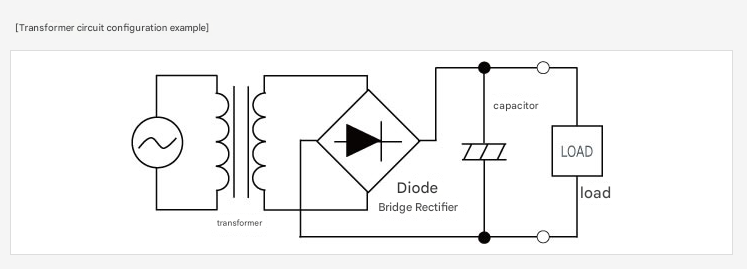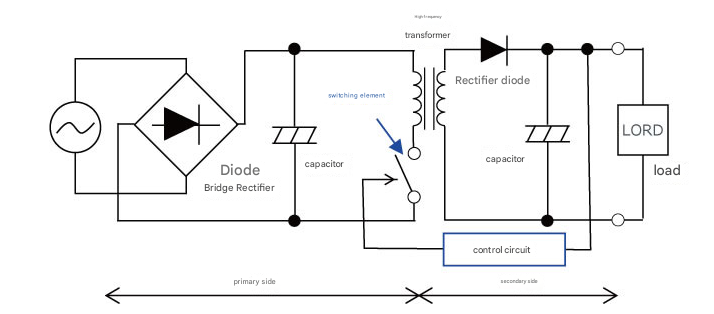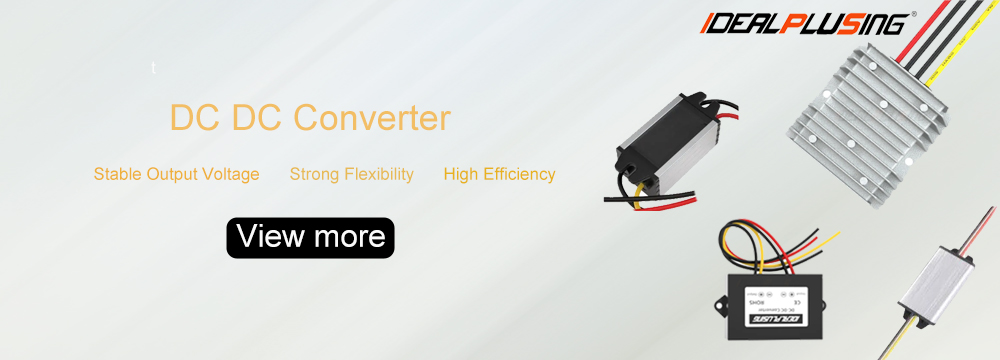AC-DC converters are a key component found in many electronic devices, converting alternating current (AC) to direct current (DC). So, how much do you know about them? Let's take a closer look at AC/DC converters.
1. What is an AC/DC converter?
An AC/DC converter is a component that converts AC (alternating current voltage) to DC (direct current voltage).
Why do we need an AC/DC converter?
That's because homes and buildings receive 100V or 200V AC voltage.
However, most electrical appliances operate at 5V or 3.3V DC voltage.
In other words, without converting AC voltage to DC, these appliances won't function.

Some products, such as motors and light bulbs, can be driven by AC voltage. However, since motors are connected to microcontroller control circuits and light bulbs are converted to energy-saving LEDs, A/D conversion is necessary.
Why is AC voltage transmitted?
Some may wonder, "Since electrical appliances use DC, why not transmit DC in the first place?"
As we all know, electricity comes from hydroelectric power plants, thermal power plants, nuclear power plants, and other sources. These power stations are located in mountainous or coastal areas, and AC voltage is more advantageous for transmission from these areas to urban areas.
Simply put, transmitting AC voltage at high voltage and low current reduces transmission losses (energy loss).
However, in real homes, since high voltage cannot be used directly, it must be transformed (stepped down) in stages at several substations before being converted to 100V or 200V before reaching the home. Because AC is simpler to use, AC voltage is transmitted.
2. Full-Wave Rectification and Half-Wave Rectification (AC/DC Conversion)
Full-wave rectification and half-wave rectification are two rectification methods for converting AC (alternating current voltage) to DC (direct current voltage). Both methods utilize the forward current flow characteristics of diodes for rectification.

Full-wave rectification uses a diode bridge circuit to convert the negative voltage component of the input voltage to a positive voltage, then rectifies it into a DC voltage (pulse voltage). Half-wave rectification, on the other hand, uses a single diode to eliminate the negative voltage component of the input voltage, then rectifies it into a DC voltage (pulse voltage). Afterward, the charging and discharging functions of the capacitor are used to smooth the waveform, converting it into a pure DC voltage.
Therefore, full-wave rectification can be said to be a more efficient rectification method than half-wave rectification, which does not utilize the negative input voltage component.
Furthermore, the smoothed ripple voltage varies depending on the capacitor capacity and load.
Under the same capacitor capacity and load conditions as full-wave rectification, full-wave rectification produces a lower ripple voltage. Lower ripple voltage indicates higher stability and better performance.
3. AC/DC Conversion Methods
AC/DC conversion can be divided into transformer-based and switching-based methods.
Transformer-based Method
This is the transformer-based circuit structure of a common AC/DC converter.

The figure below shows the voltage waveform changes in the transformer-based method.
The transformer-based method first requires a transformer to step down the AC voltage to an appropriate AC voltage (for example, from 100V AC to 10V AC). This is AC/AC conversion, and the voltage step-down value is determined by the transformer's winding ratio. Next, the AC voltage, stepped down by the transformer, is full-wave rectified by a diode bridge rectifier, converting it into a pulse voltage.
Finally, it is smoothed by a capacitor and output with a low-ripple DC voltage. This is the most traditional AC/DC conversion method.

Switching Method
This is the switching method circuit structure of a common AC/DC converter.

The figure below shows the voltage waveform changes in the switching method.
The transformer method first steps down the AC/AC voltage using a transformer, while the switching method directly rectifies the AC voltage using a diode bridge rectifier. Since ordinary household electricity voltage is AC100V or AC200V, the diode bridge rectifier must be rated to withstand high voltages.
Next, the DC voltage (pulse voltage) is smoothed by a capacitor. Capacitors also need to have high-voltage resistance.
The DC voltage is then chopped (cut) by the on/off switching of the switching element, stepped down by a high-frequency transformer, and transmitted to the secondary side. At this point, the chopped waveform becomes a square wave.
Compared to household frequencies (50/60 Hz), switching elements operate at higher frequencies (e.g., 100 kHz). This high-frequency operation allows for smaller and lighter transformers.

On the secondary side, a rectifier diode performs half-wave rectification on the square wave, which is then smoothed by a capacitor to output a DC voltage.
The switching method uses a control circuit to control the switching elements to achieve a stable, desired DC output (e.g., 12 V DC).
Compared to the transformer method, the switching method consists of switching elements and a control circuit, resulting in a more complex circuit structure. However, its high-frequency control allows for the use of a smaller transformer, contributing to device miniaturization, a significant advantage.
Share our interesting knowledge and stories on social media














